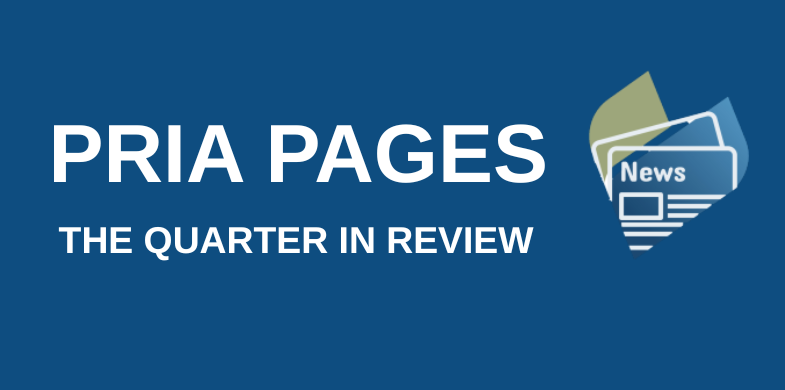In Brief: An Attorney's Take
How Much Evidence Is Enough for Medical Technology to be Covered by Commercial Payers?
By Kristofer Munroe, JD
Director of Compliance and Reimbursement, Health Economics, and Market Access
Securing commercial insurance coverage for medical technology often hinges on one critical question: How much evidence is necessary to satisfy payer requirements? While "it depends" is a common, albeit frustrating, response, this article seeks to clarify this ambiguity and explain the factors driving the evidence requirements for the creation of medical policies.
Understanding the Framework: Law vs. Medical Policy
In the legal realm, evidence standards are clearly defined — “preponderance of the evidence” governs civil cases, and “beyond a reasonable doubt” applies in criminal law. In contrast, medical policy often requires "evidence sufficient to conclude the net impact of the technology on health outcomes." This standard guides medical directors and clinicians, key decision-makers in the insurance sector, as they evaluate new technologies. However, specific requirement and criteria vary from payer to payer.
The Role of Medical Directors
Medical directors, often with backgrounds in clinical practice, are pivotal in policy decisions. Their primary role is not to facilitate the sales of your product but to steward limited healthcare budgets effectively. They assess technologies on their ability to significantly improve health outcomes. Understanding their perspective is crucial; they view themselves as guardians of limited health resources, tasked with maximizing the utility of their expenditures.
Self-Reflection: Evaluating Your Technology
Before approaching payers, it's crucial to objectively assess your technology: What type of product do I have?
Is it a novel technology addressing an unmet need in current medical treatments? Is it a substantial or improvement product that offers substantial improvements over existing solutions? Or, is it a “me too,” a lower cost alternative entering the market? Product type will have a meaningful impact on the level of evidence that is required for coverage. Unmet needs will usually need comparative data to the standard of care even if the standard of care is a very different treatment mode. Incremental and substantial improvement products will need evidence directly comparative to the products which they are improving or competing with. Me too products are seldomly given policy attention by commercial payers.
Is there any baggage from technologies that came before?
Previous aggressive marketing tactics and the resultant payer skepticism or negative experiences can create significant barriers for subsequent technologies in similar medical spaces. For example, earlier wound healing technologies, such as autologous platelet cell preparations and negative pressure wound therapy (NPWT), were marketed aggressively without robust supporting evidence. This set a precedent that has made it challenging for newer technologies in this space, as payers now demand higher standards of evidence, often including randomized trials. Similar issues are seen in spine technologies, where earlier methods like intradiscal electrothermal therapy or laser discectomy were introduced with insufficient evidence, leading to negative payer policies. This has created an environment where even technologies for different indications, like percutaneous vertebroplasty, face heightened scrutiny and skepticism from payers. The historical context and prior experiences of payers heavily influence current reimbursement decisions, making it essential for manufacturers to understand and navigate these legacy barriers. The article suggests that new technologies must clearly differentiate themselves from their predecessors and meet higher standards of evidence to overcome entrenched skepticism.
What is the potential patient population size?
Technologies aimed at larger populations may face stricter scrutiny, as their widespread adoption has significant budgetary implications. While payers will not usually make medical policies for technologies that do not have provider demand demonstrated through authorization requests and appeals, by positioning out the gate with a large population payer medical directors may reflexively raise barriers if they perceive a large patient population.
Three key takeaways about the Evidence Burden for new technologies
Diverse Opinions Among Decision-Makers: Feedback from a single medical director represents just one perspective. Medical directors vary in their views and motivations, and understanding this diversity is key to navigating the approval process effectively.
Clinical Efficacy Over Cost: Initially, focus on proving clinical efficacy. Starting with economic arguments might suggest a lack of robust clinical data.
Economic Considerations: While some directors claim that cost is not a primary evaluation criterion, economic factors invariably influence decision-making processes. It's crucial to recognize how cost-effectiveness intersects with clinical benefits in shaping policy decisions.
Conclusion
The question of "how much evidence is enough?" is complex and influenced by multiple factors. Successful navigation of this landscape requires a deep understanding of both the decision-makers and the specific attributes of your technology. By being aware of the people making medical policy decisions, and by being self-aware, you can enhance your chances of achieving coverage for your medical technology.
Our team of experts are here to guide innovators navigating the path to commercial success -- how can we help you?

Kristofer C. Munroe, J.D.
Director, Compliance and Reimbursement, Health Economics,
Market Access and Corporate Development
Click the Icon below to share this with your network














